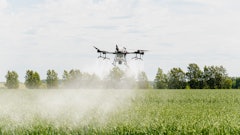As the deadline for comments to the USDA about Dow AgroScience's application for approval for it's GMO corn approaches, this article from SustainableBusiness.com says that over 387,000 farmers, farmworkers, health professionals, and concerned individuals from across the country have responded in hopes to put pressure on the US Department of Agriculture (USDA) not to approve the latest GMO.
The approval from Dow AgroSciences, is for GMO corn and soybeans called "Enlist" that can resist the toxic herbicide 2,4-D, a known neurotoxin and key ingredient in Agent Orange.
800-plus farmers filed an official petition with USDA, warning that if this GMO is introduced to the environment it will directly harm their crops, livelihoods and health. This chemical arms race with weeds must stop, says one commenter.
"Our farmer members raise a variety of certified crops, including organic soybeans, fruit and vegetables, that are highly sensitive to 2,4-D. If Dow's new 2,4-D seeds are approved and planted, and 2,4-D use surges across the country, those crops and the markets that depend on them will suffer tremendous losses. Those of us who live in farm country know that drift happens," says Karri Stroh, Executive Director of Northern Plains Sustainable Agriculture Society.
"The new GMO herbicide-resistant seeds are part of a technology package explicitly designed to facilitate increased, indiscriminate herbicide use and pump up chemical sales," states Marcia Ishii-Eiteman, senior scientist at Pesticide Action Network. "These GE seeds are the growth engine of the pesticide industry's marketing strategy. That's why Dow itself describes weed resistance to
herbicides as a ‘great opportunity for chemical companies.'"
Spraying these pesticides are also being heavily implicated in the collapse of pollinator populations, such as bees and butterflies.
To read more, click HERE.




























